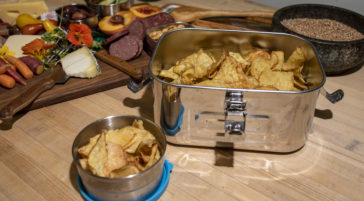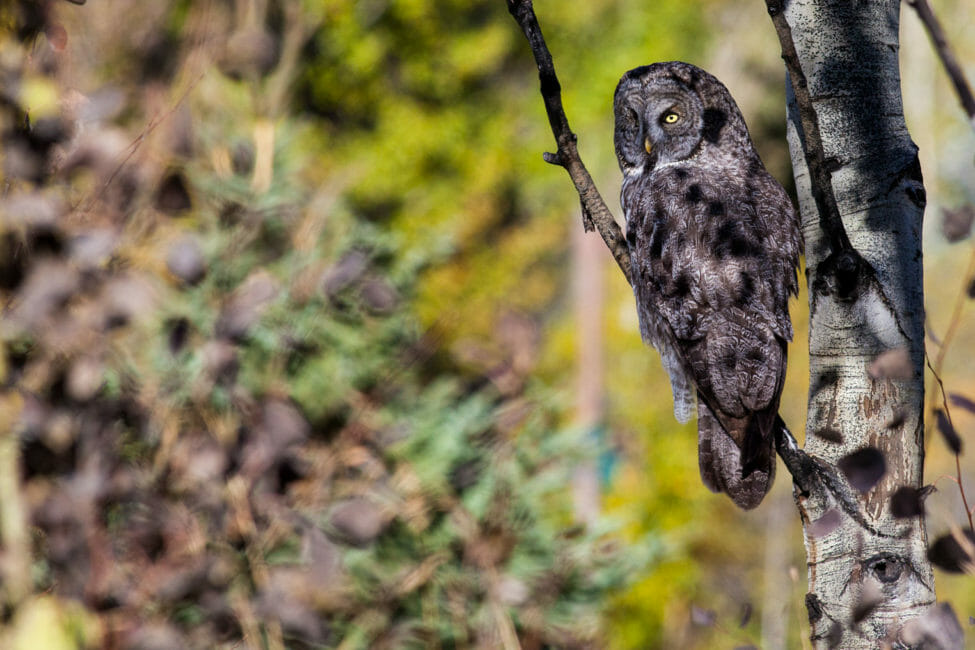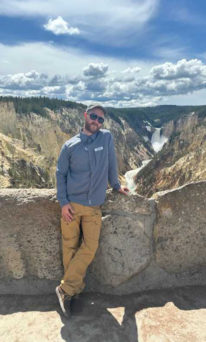Overview
On a full day Grand Teton Wildlife Safari Tour, our experienced guides will navigate guests along the scenic routes that loop around forests, beside the shorelines of beautifully clear, glacially fed lakes, and along the base of the steep and dramatic Teton Range. This Grand Teton wildlife tour will reveal the wonderful variety of alpine scenery that can be found throughout the park, and it provides opportunities to access a spectrum of habitats where different wildlife species can be found. On this wildlife safari, we will search for larger mammals, like deer, elk, moose, pronghorn, bear and bison as well as smaller mammals and a variety of avian species.
Highlights
- National Park Tour & Wildlife Watching
- Stunning Alpine Landscapes & Photo Opportunities
- Short Walks & Explorations
Your exact route and itinerary will be determined by your interests, current wildlife sightings, and current weather and road conditions. Our guides are all highly experienced, with thousands of hours in the field, and will expertly tailor your safari to you and your group.
Encompassing both the Teton Mountain Range and the Jackson Hole valley is Grand Teton National Park. This park preserves over 300,000 acres of the region for the benefit of a magnificent diversity of wildlife and their crucial habitats. It is also a valuable resource to those that venture into the wildlands of Wyoming by revealing the necessity of preservation. This principle of protecting a world where nature supersedes human development can provide a vital sanctuary from bustling metropolises.
The Teton Mountain Range rises like a jagged, majestic rocky crown at the west side of Jackson Hole. The mountains often capture the entire attention of visitors, making the incredible array of this geographic “hole” easy to miss. Look either to the North, East, West or South in Jackson Hole, (on a clear day, of course,) and you will witness mountains. The surrounding peaks reach heights that exceed 12,000-13,000 feet in elevation, with the Grand Teton being the tallest at 13,775 feet. The Teton Range rises most abruptly, like a sheer rocky wall, with little to no foothills, easing up into the high alpine county. On a geological time scale these mountains are young, hence the dramatic, jagged peaks that have yet to be worn smooth by forces like wind, snow and rain. This mountainous terrain has largely affected the biodiversity and anthropological history of Jackson Hole. These natural barriers, along with extreme winters, limit the survivability of species like reptiles and amphibians in the valley and over time have selected for larger mammals better adapted to colder climates- like the elk, moose and bison.
The valley floor lays over 6,000 feet above sea level, with the exception of sculpting forces like rivers and past glacial activity that have created depressions or moraines, it is relatively level and open. Here you will find a type of habitat known as a steppe, which in Wyoming is a high elevation desert that appears to be home to one single type of shrub – sagebrush. Nearing the roots of the surrounding mountain ranges, sage gives way to a variety of evergreen species and aspen tree groves. The most rugged facade of high alpine habitat resides at elevations above 9,000 feet, where the tree line fizzles out into exposed rock, permanent snowfields and eventually sharp, jagged peaks.
Different species of animals have evolved to inhabit these different habitats during different times of the year. This includes some of North America’s largest land mammals, like bison which can weigh as much as 2,000lbs and moose that reach a maximum of 1,200lbs. Some of North America’s most incredible apex predators also reside within the park- the gray wolf and the grizzly bear. These animals sit at the top of the food chain, and because of their hunting pressures, prey species like elk and deer are kept from becoming overpopulated and the balance of the ecosystem is maintained. Other notable and unique species that call Jackson Hole their home are North America’s fastest land mammal, the pronghorn; nature’s architect, the beaver; the badger, a subterranean mustelid; the regal bald eagle; the playful, aquatic river otter… the biodiversity is seemingly unlimited.
The human history of Grand Teton National Park began approximately 11,000 years ago with the arrival of indigenous people migrating north with the recession of the last ice age. It is not believed these natives had permanent settlements in the valley, rather they would stay for the summer and find a warmer place in winter. It wasn’t until the 1860’s people began to settle and develop Jackson Hole. The mountains made moving into the region very difficult- especially if you were traveling over the steep terrain by horse and covered wagon. But the temptation of owning land was stronger than this obstacle, and by the time Grand Teton National Park was initially established in 1929 homesteads could be found throughout the valley floor. The expansion of human development heavily impacted the wildlife and their habitats, which has fortunately led to conservation efforts that continue to enhance and maintain the natural diversity of the area.
Book a Private Tour with a Focus on Photography
For photographers, there are over 50 miles of roadway to navigate within the park. Along which a variety of strategically placed pullouts can be found, each offering dramatic vistas of either winding rivers, crystalline bodies of water that mirror open sky, craggy, alpine peaks and the potential for spectacular wildlife sightings. With this spectrum of landscapes to explore, the opportunities for photography are unlimited. Working in this wild space also results in no shot being the same, even if snapping a photo from a popular spot such as the Snake River Overlook or the Oxbow Bend- the weather, clouds and lighting vary on a near daily basis.
The unpredictability of wildlife enhances the experience as well. While many animals, like bison, moose and pronghorn, have distinct habitats they are typically found amongst during certain seasons, there is always the chance of finding them in unexpected places that could create the set up for an entirely unique photo. Then there are less frequently seen species, such as otters, wolves, great gray owls and grizzly bears. These animals keep you on your toes, potentially darting along a river bank or dashing through an open field and vanishing before the click of a shutter.
Our professional photography guides will cater the trip to your interests in the images you want to capture. Whether you are aspiring to be a new-age Ansel Adams or just love capturing images in an awe-striking natural landscape. A full day private photography tour into Grand Teton National Park is a perfect opportunity to have an experienced guide lead you to prime scenic viewpoints and most fruitful spots to find wildlife.
What's Included
-
Hotel pickup
-
Professional naturalist guide
-
Small group safari: 8 guests per vehicle, maximum
-
Light breakfast
-
Assorted snack basket
-
Lunch
-
Hot and cold beverages
-
Use of UHD binoculars and spotting scopes
-
Guide gratuities
-
National Park entrance fees
Public Safari
Private Safari
Pick-up Times
All guests are picked up and returned to their place of lodging. We pick up at hotels and condos in Jackson and Teton Village. Your exact pick up time will be determined by your hotel location and the season. Please make note of your pickup time, and save it for your reference.
Please give your guide an additional 5-10 minutes before and after the scheduled time to allow for other pickups or traffic conditions. Changes to trip timing may be made to accommodate daylight and/or optimum wildlife viewing.
Approximate pickup times for Jackson Hole include:
May 1 – May 14
- 6:30 AM – Teton Village locations
- 6:45 AM – Wilson, Aspens, Amangani and Spring Creek locations
- 7:00 AM – Town of Jackson locations
May 15 – September 14
- 6:30 AM – Town of Jackson locations
- 6:45 AM – Wilson, Aspens, Amangani and Spring Creek locations
- 7:00 AM – Teton Village locations
September 15 – October 31
- 7:00 AM – Town of Jackson locations
- 7:15 AM – Wilson, Aspens, Amangani and Spring Creek locations
- 7:30 AM – Teton Village locations
Private safari guests are picked up at 6:30 AM from May 1 – September 14, and at 7:00AM from September 15 – October 31.
On the Menu
Jackson Hole Wildlife Safaris is proud to offer locally sourced zero waste lunch options for all our guests on this tour. The menu includes assorted sandwiches with meats, veggies, and bread, served with chips, and a small dessert. Water is provided on every tour, and your guide will have additional hot or cold beverages on hand. Assorted snacks will be available throughout the day.
Vegan or vegetarian meals may be available. We may source meals from multiple partners in order to satisfy dietary requests or seasonal demand. Please indicate if you have a food sensitivity or allergy at the time of booking so we can discuss your meal options prior to your tour. We cannot guarantee allergen-free meals.
From my first phone call, I knew I had made the right choice. When it came to the day of the trip, everything was orchestrated perfectly. Our guide picked us up and entertained us the whole way, taking us to the best spots - we even had a close encounter with a bear on the side of the road!
Safari Tour Gallery
All photography has been shot by our talented tour guides.
FAQs
What animals will we see in Grand Teton National Park?
The wildlife you may see in Grand Teton National Park varies by season. Some animals migrate, some animals hibernate and some animals are visible throughout the year, if you know where to look. In spring, you might find grizzly bears, black bears, mountain bluebirds and bison calves. In the height of summer, you’re more likely to find bison and pronghorn. In the autumn, black bears and moose may be easier to spot. During the winter months, you may see elk, bighorn sheep, moose (possibly without their antlers), coyotes, foxes, and more.
Is it better to do a half day or a full day tour in Grand Teton National Park?
A half day tour offers a great introduction to the park, but a full day offers better opportunities to see wildlife in their natural habitat. The animals that roam the Greater Yellowstone Ecosystem are wild animals, so there’s never a guarantee that you’ll see anything as you drive through the park. On a half day tour, we have roughly 4 hours to search for wildlife, but on a full day tour, we have double that time to explore deeper into the park and spend more time looking for wildlife. A half day tour is perfect if you’re short of time and you plan on returning to the area in the near future. A full day tour would give you a much better experience, so plan ahead and schedule a full day in Grand Teton National Park, if possible.
What do others say about this Grand Teton wildlife tour?
5 Stars
Took wildlife sightseeing with Jackson Hole Wildlife Safaris. This company goes beyond the normal to show you a great trip. Smart, funny, and very knowledgeable. Got to see wildlife I’ve never seen. Our guide helped with pictures which was awesome. I’ll certainly be back with my family and I know who I’ll be asking for to show them the sights. Been on many excursions in many different countries, but this sightseeing of these wild animals and mountains rank right up there on the list. THANK YOU! PERFECT TRIP!
Warry S.
5 Stars
Our guide was a wealth of information, completely accommodating to our interests and needs and extremely well-versed in the park, the animals and anything else about which we had questions. Despite the fact that we were touring on a very hot day when most of the animals were seeking a cool shady place, we saw bison, elk, pronghorn, several species of bird, including the white pelican and great blue heron (adults and a nest with three babies, no less), mule deer and a moose. We also saw some of the most beautiful spots in Grand Teton National Park, culminating with a sunset behind the majestic Grand Tetons. Little known fact: our guide is a National Geographic photographer and filmmaker. Boom!
Amy D.
5 Stars
This was an amazing tour in and around Grand Teton National Park. My wife and I booked an all day safari and had an awesome time. Our guide picked us up at our hotel and was incredibly knowledgeable of the animals and history of Grand Teton. He was fun and engaging and we saw so much wildlife and learned so much as well, thank you! So worth it!!!!
David Z.
5 Stars
We did the private all day tour and it was awesome! Our guide knew everything about everything and was great at taking our group photos. He knew we really wanted to see a moose so he went out of his way to make an extra stop where he had heard one was sighted earlier. Highly recommend this trip and this guide!!
Kim K.
Are there grizzly bears in Grand Teton National Park?
Yes, grizzly bears do live in Grand Teton National Park! These iconic animals are most commonly found in remote, forested areas, but they also frequent valleys, meadows, and even roadsides—especially during spring and fall when they’re foraging for food. Grand Teton is prime bear habitat, so visitors should always be bear-aware and follow park guidelines to stay safe and respect wildlife. Spotting a grizzly in the wild is a thrilling and unforgettable part of many Jackson Hole Wildlife Safaris!
What is the best time of year to see wildlife in Grand Teton National Park?
Spring (April–June) and fall (September–October) are the best times for wildlife viewing. In spring, animals like bears, moose, and elk are more active after winter, while fall brings the elk rut and increased activity as animals prepare for the next winter. While wildlife can be seen year-round, these shoulder seasons offer the best combination of animal activity, scenic beauty, and fewer crowds.
Where is the best place to see wildlife in Jackson Hole?
Jackson Hole offers incredible opportunities for wildlife viewing, and some of the top spots include the National Elk Refuge and Grand Teton National Park. These areas are teeming with wildlife like elk, moose, bison, pronghorn, mule deer, eagles, and both black and grizzly bears. Wildlife is most active around sunrise and sunset, making those the ideal times to explore. For the best experience, consider a guided safari with local naturalists who know exactly where to look and how to spot these amazing animals in the wild.
Guides and Staff
Our Team
Local, experienced, and passionate guides and photographers.
Explore Grand Teton National Park
Enjoy a guided day tour from Jackson Hole through dramatic alpine landscapes while searching for iconic wildlife.
Further Reading
Explore the Beautiful Wildlife of Grand Teton National Park
Apr 19, 2022
One of the most breathtaking mountain ranges in the U.S. is located in Grand Teton National Park. The pristine lakes and alpine terrain are made more spectacular by the profile of the Teton Range that acts as a backdrop like something out of a dream.
The Matriarch
Jun 9, 2020
In Wyoming, the month of May is a pivotal time of awakening. As the last snow melts, the omnipresent gray-green sage assembles its winter energy and begins to release an aroma which is full of the fervor of spring. It is a benevolent and hopeful signal for the many plants and animals who will answer the call and unfurl their glories as well.







































